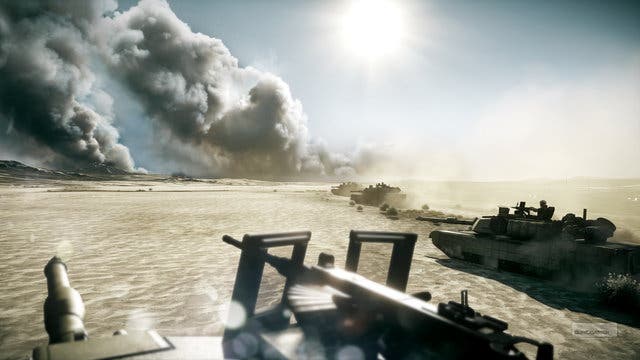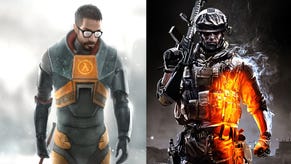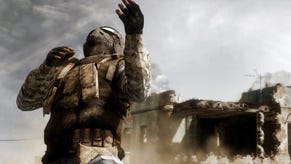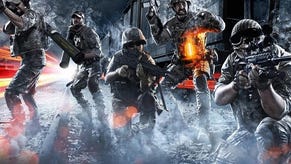Battlefield 3
Class war.
As a snapshot of what Battlefield 3's multiplayer will offer, it's thrilling, though there's understandable concern from those who were fighting the good fight before the series made the move to console. Bad Company 2's maps were weighted away from the vast, open-ended maps of the mainline games and the multi-vehicle combat only played into a fraction of its selection. The narrow, defined paths of Downtown Paris suggest the same could be true here. DICE is adamant that won't be the case, and there is the briefest of glimpses of the vehicle combat that's been Battlefield's bread and butter.
A heavy metal APC is the only ride available on the map, and while it doesn't have the allure of either a tank, a helicopter or one of the returning jets, it does introduce Battlefield 3's new philosophy for its vehicles. Customisable load-outs are now available for vehicles as well as infantry, the APC in question equipped in this instance with a coaxial machine gun - all the better for turning opposing soldiers into red paste. The driver will be privy to different optics.
Alongside the retooled vehicles, the backbone of Battlefield has been subject to a fairly dramatic overhaul. The class system has been rethought, the most aggressive example being the amalgamation of the Medic and Assault classes. It's a streamlining that's justified well enough by DICE; the thinking goes that as the Assault class are the guys on the front line dealing out the damage, so too are they best placed to deal with the consequences. There's a very real danger that the balance may have tipped too much in the Assault class's favour, but it's a balancing act that, from the briefest of plays, seems to currently be in check.
Other changes are subtle but far-reaching; Engineers now have a flashlight slung under their guns, which proves useful in the dark, dank confines of the Metro, and Snipers have been tempered by their need to now hold their breath to fire off a steady shot. It's a welcome change, designed to counteract the sniper camping that's blighted many an online shooter.
And then there's the Support class, returning with a new suite of tricks, having been looked over by the Bad Company games. The light machine gun is still their tool of choice, though a portable bipod now means it can be mounted across various surfaces, be that a bullet-eaten wall or the bonnet of a stricken car. Playing to this is an all-new suppression mechanic: spraying the enemy with fire and keeping them pinned down will now be met with a trickle of XP, a neat reward for an expanded role in the game.

Underpinning each and every one of the classes is a refined sense of movement, seemingly taking inspiration from a DICE stablemate that's proving hard for the studio to leave behind. Mirror's Edge's dynamic approach to traversal makes its mark here, with the player's body swinging into view as they athletically vault a low-slung obstacle.
Faith's gymnastics understandably don't make their way across and the whole process is automated, but it's enough to lend Battlefield 3 a physicality that's absent from other shooters. The hardware plays its part too, the guns having a raw edge in the hand that makes them feel, on the PC's mouse and keyboard at least, very alive.
Battlefield 3 is a very different game to that which it is being pitched against, and also to that which has gone before it in the series. The Bad Company series has schooled DICE in the appetites of a console audience, and its lessons are explicit in the immediacy of the action in its return to the mainline series. It strikes a middle ground that's likely to offend as many as it appeases, stopping a little short of Battlefield 2's nuance, while offering a more intricate game than that seen on the hyper-caffeinated killing fields of Modern Warfare.
There's more to come from either side in the run-up to release, but one things for sure: October's going to be very, very noisy.








